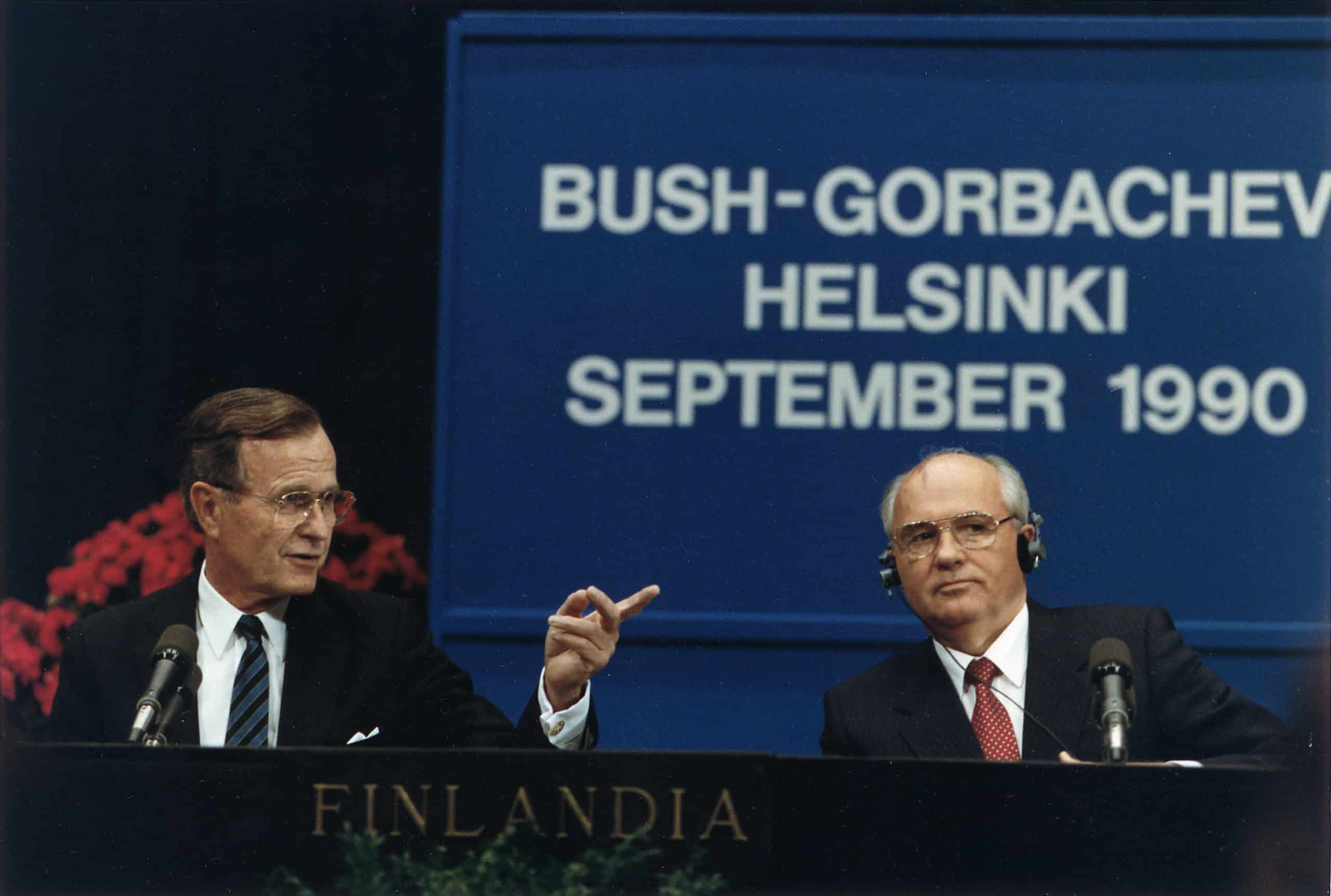Mikhail Gorbachev’s Undoing Was His Devotion to Soviet Ideas

He was unable to preserve the Soviet ideological structure, but it wasn’t from lack of trying.
Mikhail Gorbachev’s goal, according to his associates, was “socialism with a human face.” The belief that communism was reformable was what led him to risk introducing fundamental change. Soviet citizens were allowed to speak and demonstrate without fear of arrest, to open businesses and to travel abroad. Gorbachev put an end to the Cold War, renounced the Marxist idea of class struggle as the driving force of history, and refused to intervene to save communist regimes in Eastern Europe.
In the end, Gorbachev couldn’t save his own power or create democracy. He defeated totalitarianism but didn’t destroy it. He clung to socialist beliefs and fought to preserve the Soviet Union’s ideological structure. When he was removed on Dec. 25, 1991, and the Soviet flag was lowered over the Kremlin for the last time, the moral and legal vacuum he left behind spawned a criminal oligarchic regime in Russia that used terror to stay in power and launched a full-scale war against Ukraine.
In 1985, when Gorbachev became general secretary of the Communist Party, the Soviet Union was at the height of its power. But it faced problems with economic growth and military technology. In 1982 Israeli pilots flying U.S. jets destroyed 81 Syrian-piloted Soviet MiG-21 and MiG-23 jets over Lebanon’s Bekaa Valley without losing a single plane. On March 23, 1983, President Ronald Reagan announced the Strategic Defense Initiative program, which would make it possible for the U.S. to intercept Soviet missiles in space.
In response to these perils, Gorbachev initiated measures to increase productivity. These included a campaign to tighten workplace discipline and an antialcohol campaign. Both were ineffective. Gorbachev tried next to decentralize the economy. This was resisted by Communist Party officials. To overcome this resistance, Gorbachev agreed to liberalization. The regime freed hundreds of political prisoners and began to allow the release of truthful information. This was glasnost. The regime also instituted competitive elections to bodies where deputies could express opposing views openly.
The result of this change was that long-concealed social problems began to be discussed. More important, newspapers and television published facts about the mass murders during the Stalin period, including victims’ names and the sites of mass graves.
The publication of truthful information led to a nationwide crisis of faith. “Our generation was brought up under socialism and without belief in God,” a 33-year-old mother of three wrote to Pravda on Jan. 18, 1988. “As a result of glasnost, the idea of socialism has been discredited. I cannot speak for everyone but my faith has been shaken.”
The Soviet Union gave the outward impression of being monolithic, but its stability actually depended on three factors: the successful suppression of nationalism, the passivity of the working class, and the unity of the party. All these were guaranteed by the ideology, which was beginning to collapse under glasnost.
As millions changed their attitude toward communism, Gorbachev took steps to create a power base for himself independent of the party. In March 1990, the Congress of People’s Deputies, the parliament Gorbachev’s reforms had created, voted to elect him the Soviet Union’s first president. Despite the forces he had unleashed, Gorbachev remained loyal to socialism and the Soviet Union. He also didn’t risk a popular election for the post of president. This put him at a serious disadvantage in dealing with Boris Yeltsin who in June 1991 was directly elected president of the Russian Republic, formerly only an administrative unit of the Soviet Union.
The Soviet Union needed to create fully democratic institutions and prepare for a peaceful breakup on the basis of law. But in part because of Gorbachev’s determination to preserve the essential Soviet structure, the level of confrontation in society steadily rose.
In 1991 Gorbachev aligned himself with the army, police and KGB and sent troops into Lithuania to suppress the independence movement. On Jan. 13, soldiers opened fire on a crowd at the television tower in Vilnius, killing 14. A week later, 500,000 people gathered in Moscow to protest the killings.
Gorbachev prepared to sign a union treaty decentralizing the Soviet Union but preserving it as a state. On Aug. 19, 1991, however, he was isolated in his vacation residence in Crimea and his closest associates staged a coup to preserve the Soviet Union in its existing form. Yeltsin organized the resistance. Three days later the coup collapsed. When Gorbachev returned to Moscow from captivity, he had already been eclipsed politically by Yeltsin. On Dec. 25, the Soviet Union ceased its existence and Gorbachev, its first and only president, was forced to resign.
In the years that followed, Gorbachev continued to be honored in the West for ending the Cold War and for his contributions to freedom. He was much less popular in his own country. In 1996 he ran for president of Russia and received less than 1% of the vote. During the campaign he attracted a huge audience at Novosibirsk State University but the students had come to see a historical figure, not a future leader. One said, “He didn’t use the chance he had.”
Gorbachev made a profound contribution by accepting that the Soviet Union had to change. His failure to fight for a full transition to democracy, however, left Russia to carry out the transition from state ownership to capitalism without the rule of law. The consequence was bandit capitalism, terror and dictatorial rule in a new form.
David Satter is a member of the Victim of Communism Memorial Foundation’s Academic Council. This article was originally published in the Wall Street Journal.

